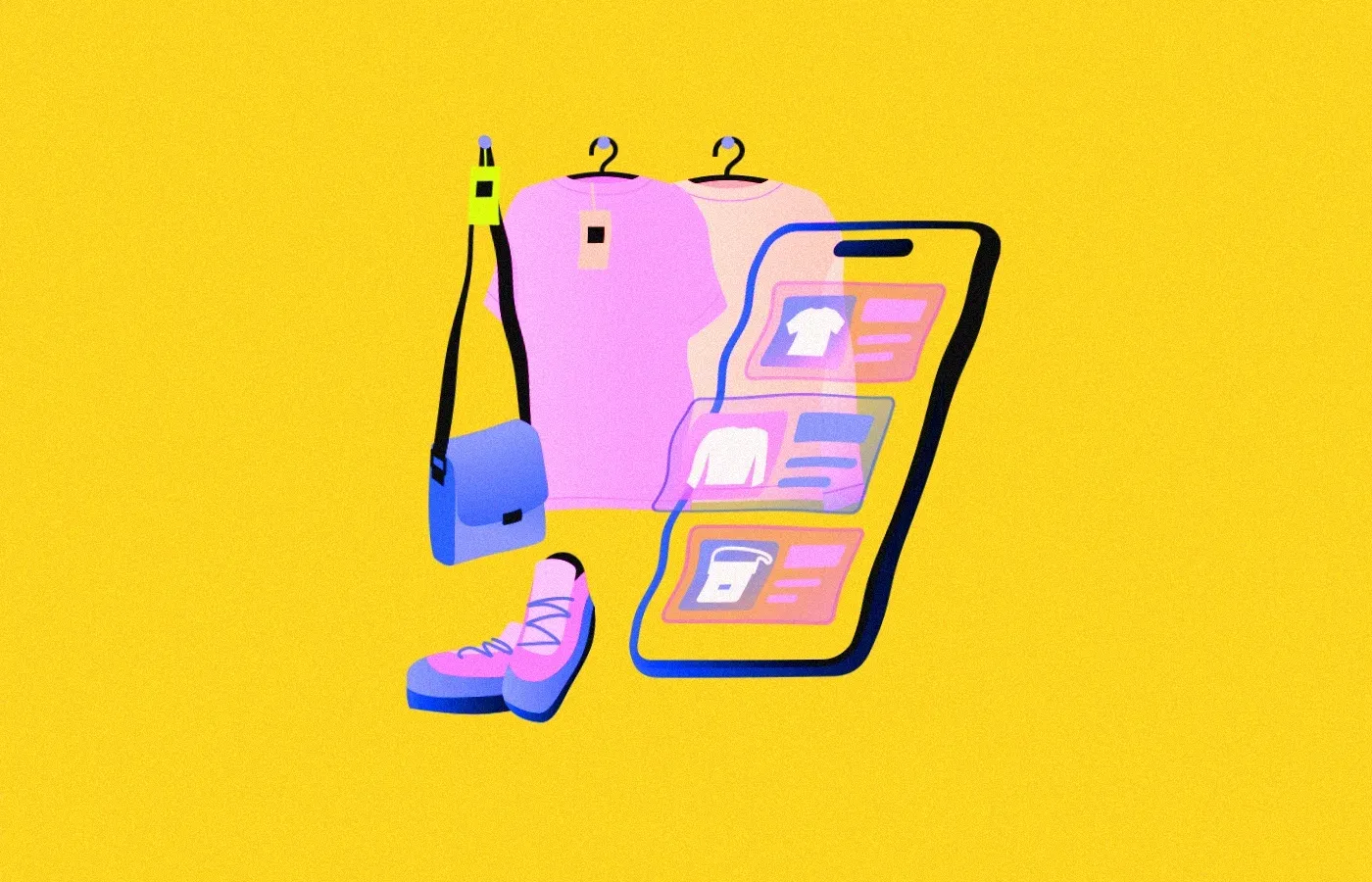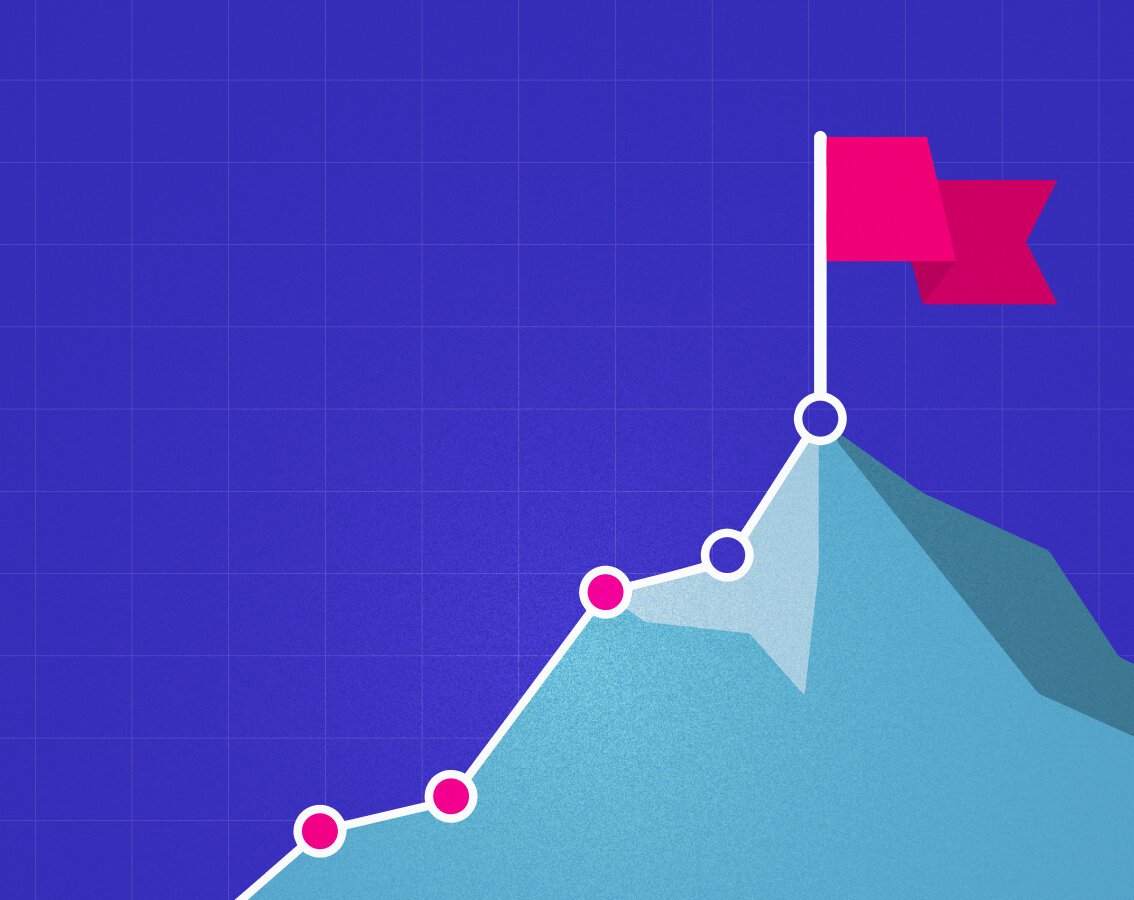blog
The Essential Guide to Developing a Successful Retail App
By Mohan S App development Retail September 26, 2024

Consumers increasingly rely on their mobile phones due to three reasons – personalized, accessible, and fast. In 2023, mobile e-commerce sales hit an impressive $2.2 trillion, accounting for 60% of all e-commerce transactions.

This shift underscores the growing need for retailers to invest in mobile app development that offer smooth, convenient, and personalized shopping experiences.
Retail Apps Landscape
The retail app landscape is rapidly evolving, with mobile apps becoming a key touchpoint for consumers and essential for retailers' success. Key trends include:
1. Convenience:
Mobile devices offer greater shopping convenience compared to other platforms.
2. Growing user base:
The number of smartphone users continues to rise steadily, which also leads to the need for predictive analytics.
3. Advances in mobile payments:
Mobile payment technology is rapidly improving, making transactions easier.
4. Shoppable media:
Platforms like Instagram and TikTok enable seamless in-app purchases. Nearly 70% of Gen Z is open to purchasing directly through TikTok.
5. App features
Mobile apps offer unique features that impact purchasing decisions, even when purchases are made elsewhere.
The Multiverse of Retail Apps
Retail apps can have multiple different types, each designed to meet specific consumer needs and enhance the shopping experience. The same can also determine the cost to develop the app Some of the most popular types of retail apps include:
1. E-commerce Marketplace Apps
These apps, like Amazon or Lazada, offer a wide range of products from multiple vendors. They provide a platform where users can browse, compare, and purchase products across different categories, all within one app.
2. Branded Retail Apps
These are individual apps created by specific retail brands, such as Nike or H&M. They offer a more personalized shopping experience and often include features like loyalty programs, exclusive discounts, and tailored recommendations.
3. Discount and Coupon Apps
Focused on offering deals, discounts, and coupons, these apps attract bargain hunters looking for the best prices on products. Apps like Honey and Groupon fall into this category, providing users with the opportunity to save money while shopping.
4. Subscription-Based Retail Apps
Apps like Dollar Shave Club offer subscription services, delivering products to customers on a regular basis. These apps simplify recurring purchases and often include features for tracking and managing subscriptions.
Retail App Development Process
The app development process consists of several key stages that transform an idea into a fully functioning app, ready for launch and continuous improvement. Let’s explore each step in detail to understand how a retail app comes to life.
1. Discovery and Research
The discovery phase is foundational to app development. Here, the focus is on gathering comprehensive requirements by conducting thorough research. Understanding the target audience and defining the app's key features and functionalities is crucial to building a solid foundation for development. This phase lays out a clear roadmap and project scope.
Market Analysis: Assessing current market trends, understanding consumer behaviors, and identifying gaps that your app could fill.
Competitor Analysis: Studying existing apps in the market to identify their strengths and weaknesses. This helps in defining unique selling propositions for your app.
Target Audience Identification: Creating user personas based on demographics, preferences, and pain points to tailor the app’s features.
Feature Definition: Establishing the core functionalities of the app, such as product browsing, payment processing, and customer support. This step culminates in a clear project roadmap and scope.
2. UI/UX Design
The UI/UX design phase is vital for transforming the initial app concept into a visually appealing and user-friendly experience. This stage focuses on crafting the app's visual identity and ensuring intuitive interactions that resonate with users. Ultimately, a well-executed UI/UX design not only enhances usability but also reinforces brand identity, setting the stage for a successful retail app.
You may like to read: 5 psychological principles that govern great UX Design
Wireframing: Wireframing involves creating low-fidelity sketches to outline an app's layout and user flow.
Prototyping: Prototyping involves creating interactive prototypes for stakeholders to test before development.
User Interface (UI) Design: User Interface (UI) design involves designing visually appealing screens aligning with brand identity, using color schemes, typography, and iconography for usability.
User Experience (UX) Considerations: UX considerations focus on creating an intuitive navigation system, minimizing steps, and ensuring a satisfying experience across devices.
3. App Development
The app development phase is where the vision becomes a reality, bringing together design and functionality. Additionally, this phase includes incorporating essential features, such as payment systems and notifications, to create a cohesive and robust retail app that meets user needs.
Front-End Development: Developers create visual components for user interaction, ensuring responsiveness across devices and screen sizes.
Back-End Development: This involves setting up servers, databases, and APIs for data exchange, integrating user authentication, and storage.
Feature Integration: Involves payment gateways, push notifications, social media sharing, and loyalty programs, may involve collaboration with designers to create a cohesive user experience.
4. Testing and Quality Assurance (QA)
Testing and quality assurance are essential for delivering a reliable and user-friendly app. Testing guarantees that the app works smoothly across various devices and operating systems. This phase helps create a secure and trustworthy experience for users.
Comprehensive Testing: Comprehensive testing involves both automated and manual methods to identify bugs, usability issues, and performance bottlenecks. It includes functional, regression, and user acceptance testing.
Device and OS Compatibility: Device and OS compatibility testing ensures seamless app performance across various devices and operating systems.
Security Testing: Security testing assesses vulnerabilities to protect user data and comply with data protection regulations.
Dig deeper with our experts: How to get started with digital product strategy for your business
5. Deployment and Launch
Once testing is complete, the app is ready for deployment and launch. It involves ensuring compliance with submission guidelines and creating compelling app descriptions, screenshots, and promotional materials to attract users.
A well-thought-out launch strategy is crucial to generating excitement around the app's release. Early user interactions and feedback must be carefully observed. This makes it easier to find and fix any problems right away, enabling swift fixes that improve the user experience overall and guarantee a smooth launch.
App Store Submission: Preparing the app for submission to platforms like Google Play and Apple's App Store, ensuring compliance with their guidelines. This includes preparing app descriptions, screenshots, and promotional materials.
Launch Strategy: Implementing a marketing plan to create buzz around the app’s launch. This can include social media promotions, email campaigns, and partnerships.
Monitoring Initial Feedback: After the app goes live, closely monitor user interactions and feedback to address any immediate issues. This can help in making quick adjustments to improve the user experience.
6. Post-Launch Maintenance
Ongoing maintenance is essential for its longevity and success. This commitment to continuous improvement helps keep the app relevant and functional in a fast-paced market. This ensures that the app evolves alongside changing user needs and technological advancements.
Regular Updates: Continuously releasing updates to enhance features, fix bugs, and improve security. This helps in keeping the app relevant and functional.
User Feedback Incorporation: Actively gathering user feedback and analytics to identify areas for improvement. This ensures the app evolves with changing user needs and technological advancements.
Performance Monitoring: Regularly assessing the app’s performance metrics to ensure it operates smoothly. This includes load testing and optimizing server responses as user demand increases.
Conclusion
If you’re ready to take your retail business higher and engage your customers like never before, now is the time to act. Get in touch with Buuuk to discover how we can bring your vision to life.


